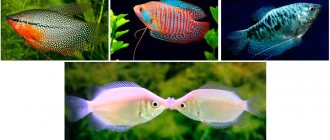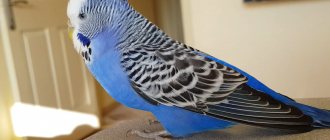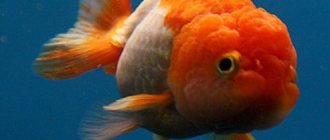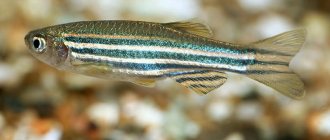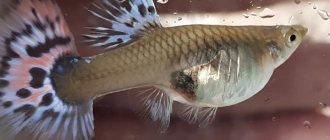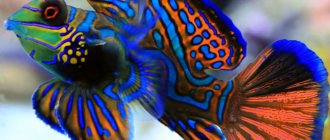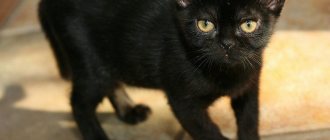Simplicity of content:
Latin name: Corydoras
Lifespan: 5-9 years
Maximum size: 7 cm.
Average cost: 50-1500 rub.
The Corydoras fish is a small armored catfish that naturally lives in the Amazon and Orinoco river basins. Corydoras catfish prefers to live in warm, fresh, soft water with a muddy-sandy bottom. This is the best fish for inexperienced aquarists because it is absolutely easy to care for. The catfish enjoys playing catch-up, and also organizes active games with other individuals, delighting the interesting behavior of its owners.
Description
Corydoras catfish have a small body from 3 cm to 7 cm; there are specimens up to 10 cm long. A characteristic feature is the presence of a shell of bone plates, which are located on the back in two rows. The most common color of Corydoras fish is olive-gray.
The body looks like a spindle, flattened towards the tail. The back is prominently convex. The oral apparatus is located below. Catfish eat food from the ground. Near the mouth there are three pairs of whiskers that help when digging in the ground.
The fin on the back is pointed in males and rounded in females. The tip of the pectoral fin is sharp and can tear the net when transplanted into another aquarium.
Has two types of breathing. Gill - for breathing in water, intestinal - when the fish swims to the surface of the water and grabs air.
Character of the Corydoras
Corydoras aquarium fish have a peaceful disposition. They get along well with any aquarium inhabitants, except aggressive predators, such as cichlids. They feel bolder in a company of 5–8 catfish. They love to hide in shelters. Digging in the ground is the main activity of Corydoras. They rarely rise to the surface of the water.
Lifespan
In an aquarium, catfish live from 10 to 12 years. There are cases when they lived up to 15–20 years.
Sparrow catfish / Dwarf catfish (Corydoras hastatus) Eigenmann, Eigenmann, 1888
Sparrow catfish (Corydoras hastatus) is a representative of the genus.
They inhabit the middle reaches of the Amazon and the upper reaches of the Paraguay River. Length up to 3 cm. The body is from soft green to golden yellow, along it there is a black stripe, which at the base of the caudal fin turns into a diamond-shaped spot, above and below the stripe there is a yellowish border. The upper edge of the adipose fin is black, the remaining fins are colorless. The female is fuller than the male. Fish love clean water and stay in schools in the middle layers of water. Water: 22-26° C, dH 5-20, pH 6.5-7.5. Spawning aquarium with fresh water 24-26° C, dH 5-10°, pH 6.5-7.2, with Java moss and aeration. The female lays eggs among plants or attaches up to 80 eggs to the glass of the aquarium. The incubation period is 4-8 days, the fry swim in 1-3 days. Puberty at 7-10 months.
Types of Corydoras
About 180 species of corydoras are known. Let's look at the most famous ones.
Golden
This catfish is also called bronze. The color is golden with a bronze tint. Has a shiny line along the back. Grows to a size of 7 cm. Females are larger than males. In natural conditions they live in Trinidad.
Mottled
The most common among Corydoras. Speckled catfish is not picky about environmental conditions. Tolerates temperature fluctuations from 3 to 30 degrees Celsius and does without air. Reproduces under any conditions. It has gained popularity since the middle of the 19th century.
The color of the speckled catfish is olive-gray, with black spots unique in shape for each fish. There is a form of albinism. They are more demanding of external conditions. The fin on the back is sharp. Females are often twice as large as males. The body length of males is 4–6 cm, and females are up to 7 cm.
Kocha catfish (Corydoras cochui) Myers, Weitzman, 1954
Kocha catfish (Corydoras cochui) is a representative of the genus.
They inhabit reservoirs in the middle reaches of the Amazon River. Length up to 3 cm. Body yellow-brown, side with a silvery sheen, belly white. A black intermittent stripe runs along the body, ending with a spot on the caudal peduncle. Caudal fin with small dark dots in the form of transverse stripes. The female is larger and plumper than the male. Water: 22-26°C, dH 5-25°, pH 6.5-7.5. Spawning is stimulated by fresh water and a decrease in temperature by 3-4° C. The female lays up to 50 eggs on solid objects and small-leaved plants. The incubation period is 4 days.
Conditions of detention
Corydoras catfish are not picky about conditions in the aquarium. The fish are bottom-dwelling, so soil structure and free space are important. For the bottom surface, dark sand or fine gravel with smooth edges is suitable. Live plants, mosses and ferns, bushes are suitable. With a strong root system so that the aquarium fish Corydoras does not undermine the plant.
It is better to keep catfish in groups of 5–8 individuals. Do not use table or sea salt to treat neighboring fish.
Requirements for an aquarium
When selecting an artificial home pond for a corydoras, consider the number of fish that will live in it. A large aquarium is not needed. For a group of up to 8 individuals, the volume is 50–60 liters. For catfish, the bottom is important, where they swarm, so that each member of the group has enough space.
General information
Corydoras catfish or armored catfish belong to the genus of ray-finned fish from the family of armored catfish. The name of these fish contains a mention of protective abilities. The word "Corys" is translated from Greek as "helmet", and "Doras" - "armor".
It’s not for nothing that Corydoras got their name; they really have serious protection - bone plates pass through the entire body, this “chain mail” allows catfish to avoid the teeth of larger predators.
They are loved by aquarists for their beautiful appearance, peaceful disposition, interesting behavior and ability to clean the aquarium. It is thanks to their tireless work that it is easier to maintain the cleanliness of the aquarium environment.
Compatibility with other fish
Possessing a peaceful and calm disposition, the Corydoras aquarium fish spends most of its time at the bottom of the reservoir. Therefore, it is compatible with many types of fish of a similar size.
Get along well with fish:
- guppy;
- gourami;
- zebrafish;
- swordtails;
- scalars;
- platies;
- discus;
- mollies;
- cockerels, etc.
Cohabitation with eels, shrimp, and barbs develops differently. And there are fish with which Corydoras cannot be housed:
- African and South American cichlids;
- Koi carp;
- astronotuses;
- goldfish;
- large predatory aquarium fish.
Natterer's catfish (Corydoras nattereri) Steindachner, 1877
Natterer's catfish (Corydoras nattereri) is a representative of the genus.
They inhabit the Paramba and Rio Dosi rivers (eastern Brazil). Length up to 6.5 cm. The back and forehead are light olive-brown, the side is delicate silver-green, the belly is whitish. On the side there is a longitudinal dark stripe with a greenish tint, and a black-brown spot under the front part of the dorsal fin. The fins are transparent, yellowish. The male is smaller and during the spawning period is much brighter colored than the female. Water: 22-24° C, dH 5-20°, pH 6.5-7.5. Spawning in a stream of clean water 23-25° C, dH 5-10°, pH 6.5-7. The female lays eggs (up to 30 pieces) on plants and solid objects. The fish don't touch the eggs. The incubation period is 2-4 days, the fry immediately take food. Puberty at 6-8 months.
Breeding Corydoras
Corydoras catfish becomes capable of reproduction at the age of 1–2 years. Each species has its own way. The breeding principle is similar for all species. Under natural conditions, spawning time occurs in November–December. In South America, this period is the rainy season. The water becomes cooler. This starts the spawning mechanism.
In an aquarium, a decrease in temperature provokes aquarium corydoras to reproduce. Procreation involves a female and a pair of males or a pair of females and several males. During the spawning period, transplant the catfish into a large aquarium, more than 60 liters. It is called spawning. When transplanting, wait 8–10 days for the fish to get used to the new place.
Conditions should be similar to your native pond. A quarter of the water is changed daily, aeration is set to maximum, and the soil is siphoned every 2–3 days. Such conditions provoke catfish to reproduce.
How is a female different from a male?
You can visually distinguish a female from a male by the shape of its fins and body size. Female corydoras are much larger than males. The most convenient way to estimate the size is by looking at the catfish from above. The fin on the back of a male catfish becomes pointed towards the end, while that of a female catfish is rounded.
Catfish Meta (Corydoras metae) Eigenmann, 1914
Catfish Meta (Corydoras metae) representative of the genus.
They inhabit the Meta River (Colombia). Length up to 5 cm. Body of delicate yellow-brown color. Starting from the dorsal fin, a narrow black-blue stripe runs along the back, which, ending, covers the caudal peduncle at the base of the tail. Another black and blue stripe runs on the head through the eyes. The fins are soft brown and transparent; the dorsal fin can be completely black and blue. The female has dark stripes. Water: 24-27° C, dH 5-15°, pH 6.5-7.5. Spawning is stimulated by changing 1/4 of fresh water, lowering the temperature to 21-22°C and pH 7 or lower. The female lays up to 100 eggs on large leaves, and in their absence, on solid objects, as well as in thickets of Java moss. The incubation period is 2-7 days, the fry swim in 2-3 days.
Choosing the right healthy catfish in the store
When buying Corydoras catfish in a store, pay special attention to:
- Are there sick fish in an aquarium with Corydoras?
- The behavior of the Corydoras himself. Is it active? A healthy fish moves actively, swims to the surface, grabs air, and easily swims to the bottom. Patients move chaotically, fall to the side or simply lie motionless at the bottom. There is a feeling of hesitation in the movement.
- No damage to the mustache.
- Red-brown spots on the body or fins indicate the presence of bacteria or fungi.
- Sick catfish have fins that are stuck together or covered with rot.
- A sunken belly indicates worms.
- The eyes of a healthy fish are clear, without films or cloudiness.
- Do not pick up catfish with red or inflamed gills. Possible nitrate poisoning.
If you plan to breed corydoras and buy several pieces, take fish of different sizes - you are more likely to get fish of different sexes.
Diseases and prevention
Corydoras are real long-livers of the aquarium. With proper care, they can live more than 10 or even 15 years. But with prolonged and severe violation of water parameters, they suffer from many diseases, which include:
- Fungal infections. Most often this is fin rot. In this case, the plumage takes on a grayish “dirty” appearance and begins to collapse and rot. Sick individuals should be given baths with a weak solution of potassium permanganate or Furacilin. Salt ones are strictly prohibited. Pets should also be treated by adding Levomycetin and Bicillin-5 to the water.
- Parasitic diseases. This, for example, is such a common disease as ichthyophthyriosis (semolina), when the body of the fish becomes covered with a rash that looks like pieces of cotton wool. Adding a solution of Malachite green and Methylene blue to the container will help.
- Invasive pathologies. There are also cases of helminthiasis in catfish. Signs of the disease are compression of the fin plumage, the appearance of red spots on the body, decreased appetite, lethargy or excessive agitation, scratching on the ground. Levamisole hydrochloride or other anthelmintics for fish should be used for treatment. Most often, parasites are introduced with low-quality food, but they can also be transmitted from new infected individuals. Therefore, you should definitely let them through the quarantine.
- Bacterial infections. These are severe lesions that most often occur as a result of a weakened pet’s immune system. For example, aeromonosis, white skin, columnaris, lepidorthrosis, tuberculosis. Antibiotics are used for treatment and consultation with a competent veterinarian-ichthyologist is required.
- Toxic nitrate poisoning. Corydoras is capable of staying in polluted water for a long time, but even this unpretentious pet can be poisoned if the concentration of ammonia and nitrites in the water significantly exceeds. At the same time, the fish lies on the bottom on its side and breathes heavily. You should immediately transplant it into a container of clean water, clean out and restart the main tank.
Reviews
Aquarists speak positively about Corydoras. Although the timidity of catfish seems like a drawback for some.
Price
The cost of Corydoras catfish ranges from 89 to 490 rubles, depending on the species. The most expensive type is Corydoras dupilcareus, for which you will have to pay from 440 rubles. Julia's corridor costs from 270 rubles. Speckled and golden Corydoras are the most affordable fish, their cost is in the range of 90-100 rubles.
Corridors cost from 89 to 490 rubles
Recommendations
The aquarium fish Corydoras is suitable for both beginners and experienced aquarists. Possessing a peaceful character, it gets along well with many fish, except aggressive predators. Undemanding to environmental conditions. He spends most of his time at the bottom, rummaging in the soil, performing the function of an aquarium orderly. Easily reproduces in captivity. With proper care, it will delight its owners with offspring and live up to 15 years.
Previous
FishWhat the corridor itself needs for a comfortable stay
Next
FishEasy to keep pearl gourami
Feeding
Corydoras fish are absolutely unpretentious in their diet and are omnivorous; they eat everything that has fallen to the bottom and are real cleaners of the tank, as they free it from parts of dead plants and fragments of the bodies of dead inhabitants.
In addition, you should feed catfish with ready-made dry granular mixtures (for bottom feeding), live and frozen food - tubifex, bloodworms, daphnia, coretra, Artemia nauplii, earthworms.
Don’t forget about tablets with spirulina; occasionally you can pamper your pets with mashed egg yolk and slices of fresh cucumber. If there is a lack of plant components in the diet, Carapaceans can significantly damage aquatic plants.
